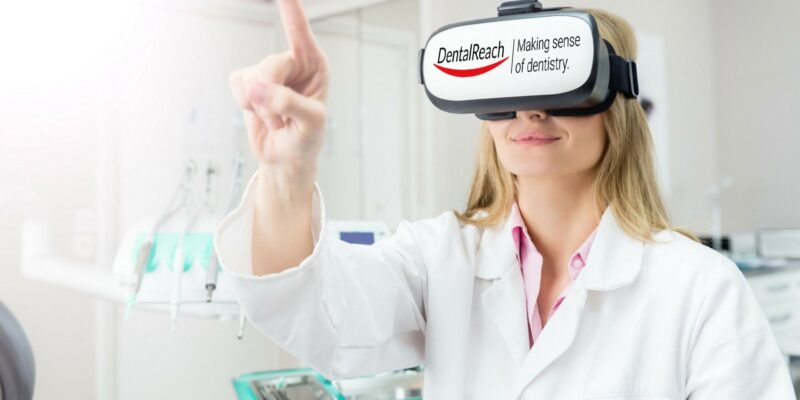Eye-Tracking Innovations Revolutionizing Dentistry
DOI: 10.7759/cureus.55105
By Amani A. Al Tuwirqi
In a groundbreaking review published on February 27, 2024, Amani A. Al Tuwirqi explores the transformative role of eye-tracking technology in dentistry. The article, available in the latest issue of Cureus (DOI: 10.7759/cureus.55105), offers a comprehensive overview of the current applications and potential benefits of eye-tracking technology in the field of dentistry.
Abstract: The narrative review begins by elucidating the fundamental principles of eye tracking, encompassing various methods and devices commonly used in dental research. The article delves into the application of eye tracking in dental education, offering unique insights into students’ visual attention during training and skill acquisition. Furthermore, it explores the technology’s role in assessing and enhancing dental practitioners’ clinical performance, shedding light on areas of improvement and expertise.
In patient care, the review highlights the potential of eye-tracking technology to analyze patients’ gaze patterns and visual focus during dental procedures, providing valuable insights into their experiences and paving the way for more patient-centric care.
The article also examines the application of eye-tracking technology in designing and evaluating dental interfaces and equipment, emphasizing the potential to enhance workflow and efficiency for dental professionals. Despite the promises, the review acknowledges challenges such as technical limitations, data analysis complexities, and ethical considerations that require careful attention for the ethical and responsible use of this technology.
In conclusion, the narrative review emphasizes the growing significance of eye-tracking technology in dentistry, spanning across education, clinical practice, and patient care. The potential to revolutionize dental procedures, evaluation, and patient experience is evident, but collaboration and further research between dental professionals and eye-tracking experts are necessary for seamless integration into dental practices.
Introduction & Background: The article provides a historical context, tracing the origins of eye-tracking technology from the late 1800s to its evolution into sophisticated modern devices. It explains the principles of eye tracking, detailing the types of systems, calibration processes, and analysis methods involved in monitoring and interpreting eye movements.
Review: The narrative review explores the diverse applications of eye-tracking technology in dentistry, focusing on key areas:
- Dental Treatment Modalities: Eye-tracking metrics are employed to assess the effectiveness of various treatment modalities, such as local anesthesia applications during dental procedures. Studies cited in the review demonstrate correlations between eye-tracking metrics and the success rate of local anesthesia delivery, highlighting the potential for improving patient safety and preventing adverse events.
- Patients’ Psychology and Behavior: Eye-tracking technology is utilized to investigate patient behavior and perception during dental procedures. The review outlines studies that reveal how patients’ fixation duration on dental instruments correlates with their perceived threat and anxiety levels. Understanding these patterns can aid in customizing interventions for patients with dental anxiety.
- Eye Tracking in Ergonomics: The application of eye-tracking technology extends to improving ergonomics in dentistry, evaluating the design of workstations, dental chairs, loupes, and lighting systems. The review cites studies identifying areas of improvement in ergonomic design through eye-tracking analysis.
- Dental Education: Eye-tracking technology proves to be a valuable teaching tool in dental education, enhancing the learning experience for students. The technology is applied to improve students’ clinical skills, feedback processes, and overall efficiency during procedures. The article emphasizes the potential of eye tracking to revolutionize the way dental procedures are taught.
- Pediatric Dentistry: Eye-tracking technology is increasingly utilized in pediatric dentistry to objectively measure anxiety, attention, and pain during dental procedures. Studies cited in the review demonstrate the technology’s effectiveness in customizing behavioral interventions, evaluating the impact of music on attention, and assessing pain levels in pediatric patients.
- Limitations: The article discusses the limitations of eye-tracking technology in dentistry, including variations in individual eye characteristics, environmental factors, participant cooperation, and potential biases introduced by small sample sizes. Acknowledging these constraints, the review emphasizes the need for consistent standards in study designs and calls for continued improvement in technology.
- Future Implications: The narrative concludes by highlighting the potential future implications of combining eye-tracking data with artificial intelligence (AI) and machine learning algorithms. The integration of these technologies could lead to predictive models for diagnosing dental conditions, assessing treatment outcomes, and optimizing treatment plans, promising more accurate and efficient dental care delivery.
Conclusions: Despite the acknowledged limitations, the narrative review indicates the need for further research into the clinical implications of eye tracking in dentistry. The technology holds promise for enhancing patient care and clinical outcomes, representing an exciting opportunity to advance dental education, research, and practice. Continued research and development are essential to unlock the full potential of eye-tracking technology in dentistry.
References: The review provides a comprehensive list of references, including studies on eye-tracking technology in dentistry, advancements in artificial intelligence for dentistry, and relevant research on eye tracking in various medical and educational contexts.
Read the full article and explore the latest advancements in eye-tracking technology in dentistry on Cureus.




















Comments